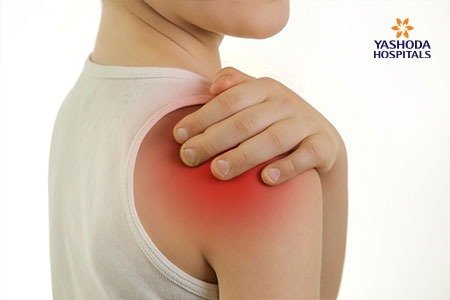Erb’s Palsy
Types, Causes, Symptoms, Prevention, Diagnosis and Treatment
What would you like to know?
What is Erb’s Palsy?
It is a condition wherein paralysis of the arm is caused when the upper group of the arm’s main nerves are injured. It is a form of brachial plexus palsy which is a network of nerves near the neck that gives rise to all the nerves of the arm. These nerves are responsible for providing movement and feeling to the shoulder, arm, hand, and fingers.
Palsy means weakness and Brachial Plexus Birth Palsy causes weakness to the arm and loss of motion. It is usually caused when an infant’s neck is stretched to the side through a difficult delivery.
Most infants with this condition usually recover from weakness and feeling in the affected arm, often with daily physical therapy exercises.

What are the types of Erb’s Palsy?
There are four different types of this condition in infants:
- Neurapraxia: It shocks the nerve but does not tear it.
- Neuroma: These injuries are those involving damage to the nerve fibers.
- Tear (or rupture) of the nerve: It causes the nerve to be torn apart.
- Avulsion: It occurs when the nerve is completely torn from the spinal cord.
What are the causes of Erb’s Palsy?
The most common cause of Erb’s palsy is excessive pulling or stretching of an infant’s head and shoulders during delivery. There are high chances of a child facing this disorder if the delivery was:
- Cephalo-Pelvic Disproportion
- Head-First Delivery
- Breech Delivery
- Forceful Arm Pulling
- C-Section
You may also interested in reading
Read More Information
References:
- Erb’s Palsy. Aamen. Available at: https://www.aanem.org/Patients/Muscle-and-Nerve-Disorders/Erb-s-Palsy Accessed on June 16th, 2020.
- Erb’s Palsy. Physio Pedia. Available at: https://www.physio-pedia.com/Erb%27s_Palsy Accessed on June 16th, 2020.
- Erb’s Palsy. Cerebral Palsy Guidance. Available at: https://www.cerebralpalsyguidance.com/birth-injury/erbs-palsy/symptoms Accessed on June 16th, 2020.
Disclaimer:
“The content of this publication has been developed by a third party content providerwho are clinicians and/or medical writers and/or experts. The information contained herein is for educational purpose only and we request you to please consult a Registered Medical Practitioner or Doctor before deciding the appropriate diagnosis and treatment plan.”



 Appointment
Appointment Second Opinion
Second Opinion WhatsApp
WhatsApp Call
Call More
More





